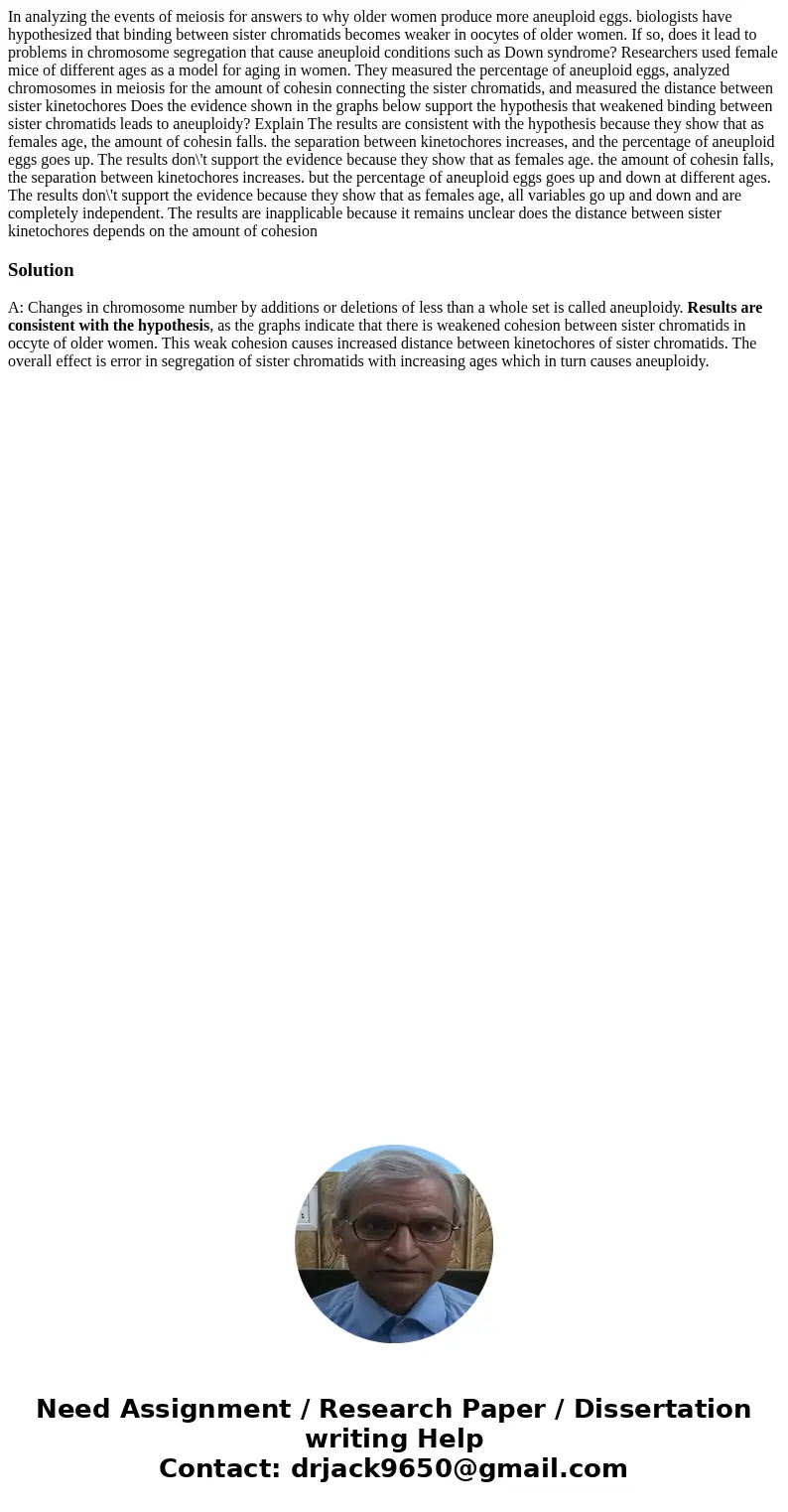In analyzing the events of meiosis for answers to why older
In analyzing the events of meiosis for answers to why older women produce more aneuploid eggs. biologists have hypothesized that binding between sister chromatids becomes weaker in oocytes of older women. If so, does it lead to problems in chromosome segregation that cause aneuploid conditions such as Down syndrome? Researchers used female mice of different ages as a model for aging in women. They measured the percentage of aneuploid eggs, analyzed chromosomes in meiosis for the amount of cohesin connecting the sister chromatids, and measured the distance between sister kinetochores Does the evidence shown in the graphs below support the hypothesis that weakened binding between sister chromatids leads to aneuploidy? Explain The results are consistent with the hypothesis because they show that as females age, the amount of cohesin falls. the separation between kinetochores increases, and the percentage of aneuploid eggs goes up. The results don\'t support the evidence because they show that as females age. the amount of cohesin falls, the separation between kinetochores increases. but the percentage of aneuploid eggs goes up and down at different ages. The results don\'t support the evidence because they show that as females age, all variables go up and down and are completely independent. The results are inapplicable because it remains unclear does the distance between sister kinetochores depends on the amount of cohesion
Solution
A: Changes in chromosome number by additions or deletions of less than a whole set is called aneuploidy. Results are consistent with the hypothesis, as the graphs indicate that there is weakened cohesion between sister chromatids in occyte of older women. This weak cohesion causes increased distance between kinetochores of sister chromatids. The overall effect is error in segregation of sister chromatids with increasing ages which in turn causes aneuploidy.

 Homework Sourse
Homework Sourse